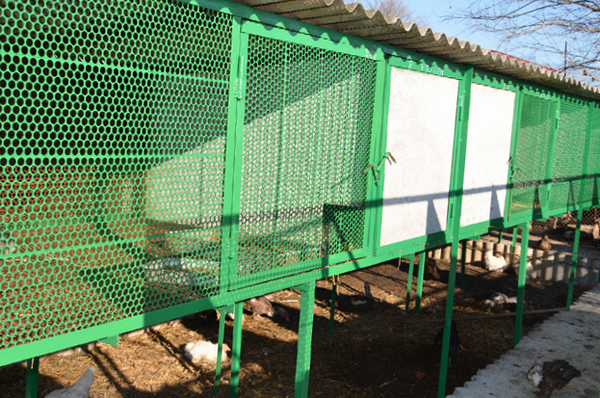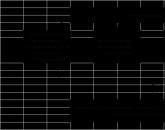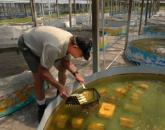Simple business - private household plots (personal subsidiary plots)
Recently, agriculture has become a topical topic, in any case its small forms in the form of small farms, personal subsidiary plots. The structure of such a business is optimal for the challenges of economic realities. In fact, small agricultural business is an extremely flexible and competitive mechanism for protecting the population from:
- On the one hand, from food shortages.
In reality, it is possible to increase the production of a particular product within half a year, for example, start or double it (from 100 to 200 heads). Of course, such volumes seem small on a national scale, but if we are talking about millions of private household plots, accordingly, the increase in volumes becomes very noticeable.
- On the other hand, to provide a stable, profitable business for millions of able-bodied citizens.
In terms of profitability, most areas of agriculture can compete with trade. For example, pure in the region of 60%, turkeys in the region of 100%, pork is capable of giving at least 55%, taking into account the sale of fresh meat.
But besides such patriotic and purely mercantile factors, there is another one, the ease of doing business. The fact is that the state for small agricultural business invented and implemented a separate form of farming under the name of a personal subsidiary farm(or LPH).

What is a private household
Regulation of the activities of private household plots on the territory of the Russian Federation is carried out on the basis of the Federal Law "On PERSONAL AUXILIARY HOUSING" of July 7, 2003 N 112-FZ (as amended by Federal Laws of 22.07.2008 N 141-FZ, of 23.07.2008 N 160-FZ , dated 30.12.2008 N 302-FZ, dated 21.06.2011 N 147-FZ).
Article 2 of the Federal Law No. 112 determines that private household plots are:
- - non-entrepreneurial activities. In fact, with such a definition, the legislator clearly indicated that any income received from the conduct of this activity is not taxed. Moreover, both from the sale of the products themselves and from processed products.
Example. When raising pigs, you can not only sell pork in live weight or in the form of fresh meat, but also produce cutlets, dumplings, sausages. True, with the provision of appropriate sanitary standards. At the same time, no taxes are paid on all products, including pension contributions.
- - the activity is carried out by the owner or tenant of the land, and you can also involve relatives, and the degree of kinship is not important, plus other people (not relatives), provided they live with the owner. At the same time, taxes on the income of conditionally employees are not paid, including pension contributions.
In practice, this form allows a very active use of hired labor, for this it is enough to attract people willing to live on the territory of the private household plots.
This definition is talking about real opportunities to actually start a business in villages without any tax regulation or pressure.
How much land can be used for private household plots
After the amendments were made in 2011, the legislator limited the area for personal subsidiary plots to 0.5 hectares for one private household plots, art.4 ZF No. 112. At the same time, land can be allocated free of charge at the expense of municipal and state property, or acquired by a citizen. In shape, such a land can be:
Household plot- This is land within the boundaries of settlements, on which you can erect residential buildings, buildings, and so on.
Field land plot- outside the city limits, on such land it is impossible to build a capital structure, but it is possible, corrals, sheds, in general, any non-title buildings. By the way, the development of technology makes it possible to build the same sheds for breeding animals without the construction of capital structures.
There are two other important points about overall size:
- First, the area of land for subsidiary farming can be increased up to 5 times by the decision of regional authorities (that is, one private household plots can account for up to 2.5 hectares of land)
- Second, when we talk about the maximum border of 0.5 hectares per private household, we are talking about all the citizens involved in this farm.
By the way, farms do not need to be registered, but their records are kept by local self-government bodies of settlements and local self-government bodies of urban districts in household books. A citizen gives information for a book voluntarily and to the extent that he considers necessary. Such an accounting system makes it possible to increase the total volume of land for doing business by creating separate private household plots for relatives.
How many animals can a personal subsidiary farm have?
The total number of animals is not limited, it can be either 10 or 1000 heads, although all of them must fit on the removed volume of land. So with intensive forms of cultivation, it is possible to organize a personal farm with 1000 livestock of pigs. 0.5 hectares should be enough
It must be remembered that you can use "a land plot, a residential building, industrial, household and other buildings, structures and structures, including greenhouses, as well as farm animals, bees and poultry, agricultural machinery, inventory, equipment, vehicles and other property , owned or otherwise owned by citizens who run their own subsidiary plots "Article 6 of the Federal Law No. 112. The legislation does not carry any other restrictions, although all buildings must comply with sanitary, fire and building standards.
What products can be produced and what taxes are paid by the private household
Anything related to agriculture can be grown, plus it is engaged in the complete processing of the grown products to the final consumer.
- pig - carcass - cutting (sale of semi-finished meat products) - processing (dumplings, cutlets)
- growing garlic - selling fresh garlic - processing (pickled garlic)
The subsidiary farm does not pay any taxes or fees. True, at their own request, a citizen can independently pay a pension contribution, but this is only at their request. And so no more taxes and fees.
What confirms the right not to pay taxes
When selling your own products, it is imperative to take a certificate from local authorities, which will indicate information about private household plots, the size of the land used and the types of processing or production of agricultural products. It is this document that will de facto release from the obligation to pay tax at the place of sale.
Do not forget that the information about other persons employed in the activity would also be entered into the certificate in order to avoid unnecessary questions about hired labor.
Local authorities are obliged to do this. Indeed, in accordance with Article 8 of the Federal Law No. 112, the following is entered into the household book:
- surname, first name, patronymic, date of birth of a citizen to whom a land plot was provided and (or) acquired for running a personal subsidiary farm, as well as surnames, first names, patronymics, dates of birth of those living together with him and (or) maintaining personal subsidiary farming of his family members;
- the area of the land plot of a personal subsidiary farm occupied by crops and planting of agricultural crops, fruit, berry plantings;
- the number of farm animals, poultry and bees;
- agricultural machinery, equipment, vehicles owned or otherwise owned by a citizen running a personal subsidiary farm.
Video examples of successful personal subsidiary plots
Popular
- The bull and the bear on the stock exchange: the beastly face of the stock market
- Stages of opening a private dental office
- How to open your own store - step by step instructions for beginners + real life example
- Sales revenue - formula and concepts
- What is the difference between margin and profit - calculation formulas
- Advice 1: How to switch from simplified to a system with VAT payment
- Car depreciation - what is it?
- Yesterday's business: 7 main problems of modern realtors :: Opinions :: RBC Real Estate
- What is the difference between public and non-public types of joint stock companies, partnerships and cooperatives?
- Simple business - private household plots (personal subsidiary plots)





